The father of surgery, Sushruta, has written about several surgical techniques as well as a few parasurgical ones. ‘Agni karma’ is one of these non-surgical methods. Sushruta has given Agnikarma a unique place in surgery, and it has been observed that diseases healed by Agnikarma never reoccur as Agni is regarded as a very high-quality therapy. It can cure diseases that are incurable with medication, surgery, or alkali application. [5]
In this article, we will discover this treasure trove of Ayurveda, Agni karma. We will also explore what is Agni karma in Ayurveda, Agni karma benefits, side effects and much more!
Agni Karma & Its Role in Ayurveda
Dahan karma is another name for Agnikarma. This therapy uses heat burns to cure certain disorders, based on an Ayurvedic principle. This idea states that some illnesses cannot be cured by medication or surgery. It is a surgical Ayurvedic treatment that is comparable to cauterization. Agni karma in Ayurveda is frequently used to treat convulsion diseases, headaches, joint discomfort, and cramps in the abdomen. Agnikarma therapy is thought to treat illnesses, with very little likelihood of recurrence.
What is Agnikarma?
The words Agni and Karma, which stand for fire and method, respectively, combine to form the word Agni Karma. All put together, it can be described as a process assisted by fire. Intentional Heat Burn Therapy is closely related to Agni Karma therapy, to put it in modern terms. Agni karma therapy is thought to be safe, widely recognized, and practised.
The Agni karma procedure is mentioned in a number of ancient literature, dating back to the Vedic era (1750–500 BCE). The Atharvaveda uses the term ‘Agni’ to refer to ‘Bheshaja’ and suggests Agnikarma for Krimi Chikitsa. The Rigveda describes using Agni karma to treat a variety of illnesses. The diseases which are incurable by Shastrakarma (surgical operation) or Ksharakarma (Ayurvedic herbal medicine) can be easily cured with Agnikarma with rarely any incidence of reoccurrence. [3]
Different Conditions Treated by Agnikarma [3] [4]
The following are some of the ailments that can be treated with the help of agnikarma treatment.
Impact on Metabolism
Research indicates that heat-induced burn sites stimulate tissue metabolism, resulting in rejuvenating alterations and elevated oxygen and nutrient requirements at the burn site. They also facilitate the elimination of toxins.
Impact on Blood Circulation
The superficial, sensitive nerves are activated during the agnikarma procedure. This causes the blood vessels in the area to enlarge, which increases blood flow. In addition, it results in decreased blood pressure.
Impact on Pain
As a result of an elevated metabolism, the waste products are generated and eliminated. This normalises the blood circulation, which lessens the intensity of the pain.
Impact on the Lumbar Spine
Agnikarma is a treatment that can be given to certain lower back spots to ease muscle tension and increase blood flow. The lumbar area may become less painful as a result of the heat. Additionally, it can aid in the restoration of any injured ligaments or intervertebral discs.
Impact on Persistent Headaches
The application of targeted heat therapy by Agnikarma on particular head and neck locations helps alleviate headaches by decreasing their frequency and intensity.
Impact on Skin Warts
Skin warts are caused by the human papillomavirus (HPV), which can sometimes become painful. These warts can be burned with an agni karma treatment, ensuring they fall off following treatment and leave the skin healthy and clear.
Agnikarma Procedure
Although there is no clear description available regarding its classification, Agni karma therapy can be generally classified according to the various factors:
Dravyas used
Location of the site
Nature of disease
The type of akriti (shape and or image)
Dhatus to be cauterized
The following is the procedure followed in administering the agnikarma therapy. [3]
The rod (shalakha) should be softly positioned between the eyebrows on the frontal region, preferably with high spatial resolution, for Shirorog (headache, migraine, trachoma, etc.).
The rod should be positioned near the roots of the eyelashes if the illness is related to the eyelids.
The rod should be positioned at the region of highest tenderness to relieve a variety of pains, including calcaneal spur, Sandhitgat vata, Ama vata, frozen shoulder, sciatica, and cervical spondylosis.
When there is an incomplete inguinal hernia, the rod should be positioned at the superficial inguinal ring on the great toe, which is opposite to the side of the hernia.
Heat should be administered to the wound bed following excision in cases of cysts, warts, tumours, piles, fistulas, or bleeding diseases. Application on delicate body areas should be avoided, and before beginning treatment, the disease site should be properly identified.
How Agnikarma Helps to Relieve Pain?
Agnikarma therapy is regarded as the best surgical method for treating a variety of conditions, including sciatica, sprains, arthritis, and heel pain. Usually, the process is performed for 2 to 3 minutes or more only if required. Applying direct burns to the afflicted tissue’s surface using Dahanopakaranas (cauterization tools) relieves pain.
The agnikarma procedure is followed by applying heat from the cauter to the skin, which clears blockages in the Srotas channel, which carries blood, and nutrients in the body. It expels the waste materials like carbon dioxide out of the body. As a result, the affected area experiences an increase in blood circulation leading to a simultaneous rise in metabolic activity in the body. [1]
Benefits of Agnikarma [1] [3]
Agnikarma in Ayurveda is a renowned therapy for relieving pain. The following are some of the agnikarma benefits.
Patients undergoing Agnikarma therapy find immediate and long-lasting advantages.
Since Agnikarma is the most sterile operation, there is virtually very little possibility of infection following Agnikarma for the surgical wound.
Agnikarama therapy is among the most cost-effective treatments and has no adverse effects.
Agnikarma, an outpatient treatment, doesn’t require hospitalization or observation since it doesn’t cause bleeding or tissue decay. Hence, it can be managed at home with prescribed precautions.
Side Effects of Agnikarma
Although patients undergoing the procedure rarely report any Agnikarma side effects, it is nevertheless advised to adhere to recommended safety precautions and schedule follow-up appointments as directed by your therapist. Agnikarna provides immediate pain relief; however, complete benefits may not be seen for up to two or four weeks. Thus, in order to support the treatment’s objective, adherence to a balanced diet and lifestyle is required.
Potential Risks and Considerations of Agnikarma [5]
Except for Sharad (autumn) and Grishma (summer), the agni karma procedure can be performed throughout the year.
Pregnant women, young children, and individuals who consume alcohol should consult their healthcare provider before opting for Agnikarma therapy.
Those with conditions including obesity, dyspepsia, or weakened immune systems should consult healthcare professionals before commencing treatment.
The Final Takeaway
Agnikarma, with its historical significance and proven therapeutic benefits, is a testament to the timelessness of traditional healing practices. Although research into alternative therapies is progressing, Agnikarma remains a valuable part of healing practices.
Disclaimer
This article is from a health and wellness perspective only and does not constitute medical advice. Kindly seek the help of a trained medical practitioner before initiating any treatment.
Is there any contraindication for Agnikarma?
It is advisable not to undergo the agni karma procedure during the autumn and summer seasons. Pregnant women, people with weak immune systems, and young children are generally prohibited from attempting agni karma therapy.
Are there any complications in Agnikarma?
Agni karma therapy is one of the best ways to relieve pain although there are no agni karma side effects or complications, consulting your healthcare provider is a safe option to avoid any unwanted health complications.
What are the tools of cauterization used in Agnikarma?
The uniqueness of the cauterization instruments depends upon the particular illness. The materials employed have a minimal latent heat for superficial circumstances, whereas the items used have a maximum latent heat for deeper tissues. Agnikarma uses a variety of materials, such as Pippali (Piper longum), Aja Shakrit (goat dung), Godanta (cow teeth), Shara (arrow), Shalaka (probes), Varti (wicks), Suryakanta (various stones), etc.[6]
How does Agnikarma help to relieve the pain?
By clearing the blockage in the Srotas (minute channels), the heat that is applied to the skin improves blood flow to the injured area. The Agni karma technique relieves the patient’s symptoms by eliminating inflammation.
References:
- International Journal of Applied Ayurved Research ISSN: 2347- 6362 THE CONCEPT OF AGNI KARMA IN AYURVEDA AND ITS IMPORTANCE IN CURRENT AYURVEDIC SURGICAL PRACTICE. Verma Alok Kumar, 2014 January.
- Role of Agnikarma in Sandhigata Vata (osteoarthritis of knee joint) J. Nilesh, D. Tukaram, G. Sanjay. 2015 Jan-Mar; 36(1): 23–28.
- AGNIKARMA: A Reference Manual for Ayurvedic Physicians -Information Directly Extracted from Approximately 3000 Years Old Literature. March 2019
- Effect of Agnikarma (therapeutic heat burns) and Raktamokshana (therapeutic bloodletting) in the management of Kati Sandhigata Vata (lumbar spondylosis) 2019, April
- Conceptual study on Agnikarma in Ayurveda. June 2023. Maheshkumar Raut
- AGNIKARMA & PAIN MANAGEMENT Dr. Sandeep Kumar Dubey. December 2023

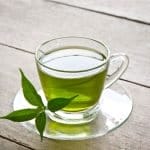
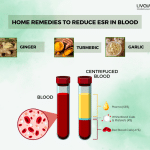
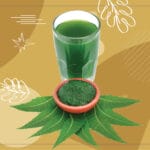


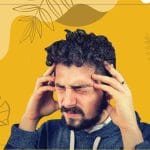

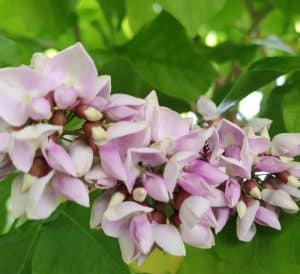
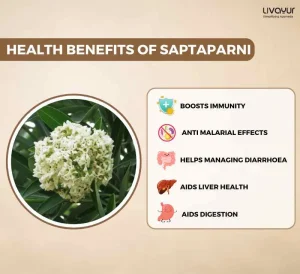
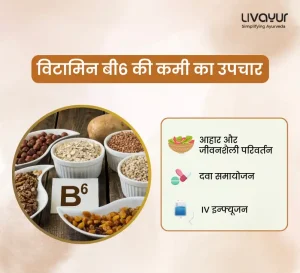
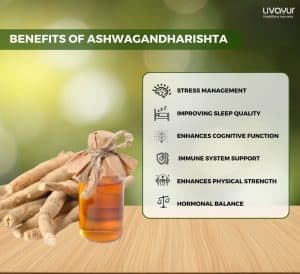
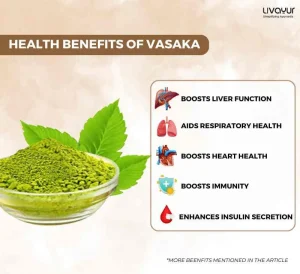




5 Comments